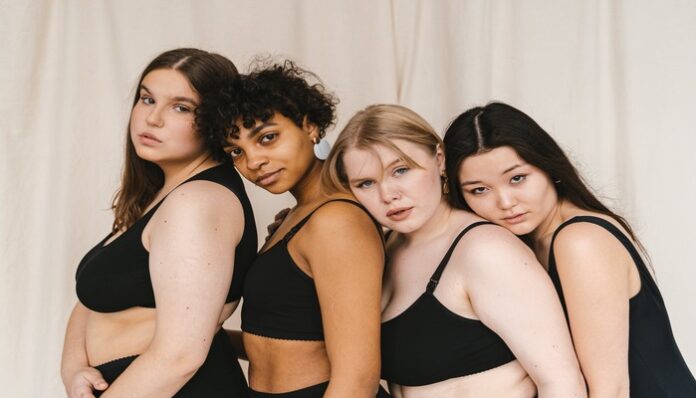
Right now, inclusivity is a pillar of the body positivity movement. With brands promoting unretouched photos and self-love campaigns, many people assume that all women feel like they have “body representation.”
Unfortunately, though, mid-size women receive next to no representation in these campaigns.
“Mid-size” is a relatively new term born from social media discourse. It most often refers to women who wear anywhere from size 10 to size 16.
As a mid-size woman myself, I believe that we should recognize that we have privilege that women who live in larger bodies do not. I’m a size 10, and fortunately, I don’t usually struggle to find my size when I shop. I don’t question whether people judge me for my food choices. And I can live my daily life without experiencing fatphobia.
However, I don’t necessarily benefit from “skinny privilege” either. When I enter popular stores, I know I’ll have to bend down to the bottom shelf to find jeans, or I’ll have to rummage through the shirt hangers to find my size pushed to the back of the rack. I also know that any shirt on a model or mannequin model will look different on my larger body. Even if the store does promote inclusivity, I’ll bet good money that the plus-sized model isn’t my body type either.
This all makes shopping a bit of a catch-22. I’m not skinny enough to share clothes with the majority of my friends, but I’m also not curvy enough to borrow from my plus-sized friends. This leaves me wishing I could share my clothes like so many other women do.
The media also constantly bombards me with images of extremely thin models or curvaceous plus-sized models — no in-between. I can’t call myself “skinny,” but I can’t call myself “plus-sized” either. In the world of fashion, I don’t fit in anywhere right now.
So that leaves me — and all of my fellow mid-size women — in the middle of a dilemma. Some may see this lack of representation as no problem. In reality, though, it just reminds me that I’m not skinny enough for people to see me as conventionally attractive. But I’m also not living in a large enough body to face fatphobia every day. Don’t get me wrong — I love that plus-sized models gained more recognition in recent years and that brands now try to be inclusive. I just don’t see myself in any of today’s top models.
While the body positivity movement has come a long way, society still has more work to do to include everyone. Inclusivity means inclusion for all, not just the people who fit into the body standards that society and the media deem as “inclusive.” By not fully recognizing mid-size women, the body positivity movement isn’t fully inclusive — but it needs to be.
Featured Photo via Pexels.



















I’m pretty positive I’ve never encountered blogs that are as comprehensive as this. Please continue updating it.